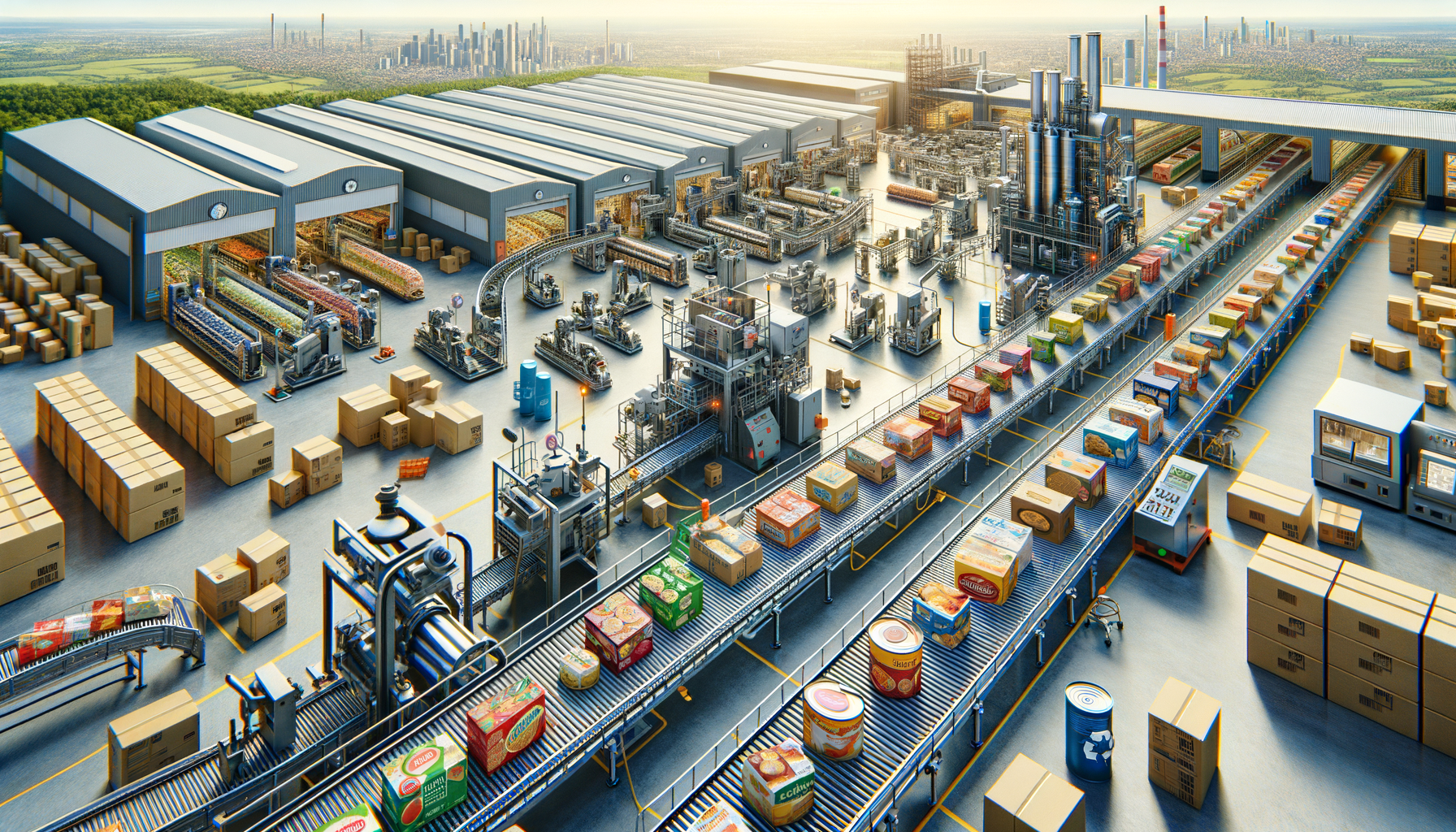The Evolution of Food Packaging
Food packaging has come a long way from its humble beginnings. Initially, packaging was primarily about containment and transportation. Over time, the focus shifted to include protection, preservation, and communication. Today, food packaging companies are at the forefront of innovation, continually adapting to consumer demands and environmental concerns.
Historically, materials like leaves, animal skins, and pottery were used for packaging. The industrial revolution brought about significant changes with the introduction of glass, metal, and later, plastics. Each material has its advantages and limitations. For instance, glass is impermeable and recyclable but heavy and fragile. Plastics, on the other hand, are lightweight and versatile but raise environmental concerns.
Modern packaging solutions often involve a combination of materials to optimize functionality. For example, Tetra Pak combines paperboard, aluminum, and polyethylene to create a package that is lightweight, durable, and recyclable. This evolution reflects the industry’s response to growing consumer awareness and regulatory pressures regarding sustainability and waste reduction.
The Role of Food Packaging Companies
Food packaging companies are not just manufacturers; they are integral to the food supply chain. They ensure that food products are safe, fresh, and appealing to consumers. Packaging serves several critical functions:
- Protection: Packaging protects food from physical damage, contamination, and spoilage. This is crucial for maintaining the quality and safety of food products.
- Preservation: By controlling the environment around the food, packaging can extend shelf life. Modified atmosphere packaging, for example, alters the gas composition inside the package to slow down spoilage.
- Communication: Packaging provides essential information to consumers, such as nutritional content, ingredients, and expiration dates. It also plays a vital role in branding and marketing.
- Convenience: Modern packaging solutions offer convenience features like resealable closures and microwave-safe materials, catering to the fast-paced lifestyle of today’s consumers.
Food packaging companies must balance these functions while also considering cost, environmental impact, and regulatory compliance. This complex role underscores their importance in the global food industry.
Innovations in Food Packaging
The food packaging industry is a hotbed of innovation, driven by consumer trends and technological advancements. One of the most significant trends is the push for sustainability. Companies are exploring biodegradable materials, such as plant-based plastics and edible packaging, to reduce environmental impact.
Another area of innovation is smart packaging. This technology integrates sensors and indicators to monitor the condition of the food. For example, time-temperature indicators can show if a product has been exposed to temperatures outside the recommended range, ensuring food safety and quality.
Active packaging is also gaining traction. This involves materials that interact with the food to extend shelf life. Oxygen scavengers, moisture absorbers, and antimicrobial agents are examples of active packaging technologies that enhance preservation.
These innovations demonstrate how food packaging companies are not only responding to current demands but also shaping the future of food consumption through cutting-edge solutions.
Challenges Facing Food Packaging Companies
Despite their critical role, food packaging companies face several challenges. Environmental concerns are at the forefront, with increasing pressure to reduce plastic waste and carbon footprints. Companies must invest in research and development to create sustainable alternatives that do not compromise on functionality or cost-effectiveness.
Regulatory compliance is another significant challenge. Packaging companies must navigate a complex landscape of regulations that vary by region and product type. These regulations cover everything from material safety to labeling requirements, demanding constant vigilance and adaptability from companies.
Consumer expectations are also evolving. There is a growing demand for transparency, with consumers wanting to know not just what’s in their food, but also how it’s packaged. This has led to a rise in demand for packaging that is not only functional but also aesthetically pleasing and informative.
These challenges require food packaging companies to be agile and innovative, ensuring they can meet the needs of both consumers and regulatory bodies while maintaining profitability.
The Future of Food Packaging
The future of food packaging is poised to be transformative, with sustainability and technology at its core. As environmental concerns continue to rise, the industry is likely to see a shift towards circular economy models, where packaging materials are reused and recycled to minimize waste.
Technological advancements will play a crucial role in this transition. The integration of Internet of Things (IoT) technology could revolutionize supply chain management, providing real-time data on product conditions and reducing food waste.
Moreover, consumer preferences will continue to drive change. As more people prioritize health and sustainability, packaging that aligns with these values will gain prominence. This could include innovations like packaging that tracks nutritional intake or packages that transform into compostable garden soil.
The future of food packaging is not just about containment; it’s about creating value at every stage of the product lifecycle. Food packaging companies that can harness these trends and technologies will be well-positioned to lead the industry into a more sustainable and efficient era.




Leave a Reply